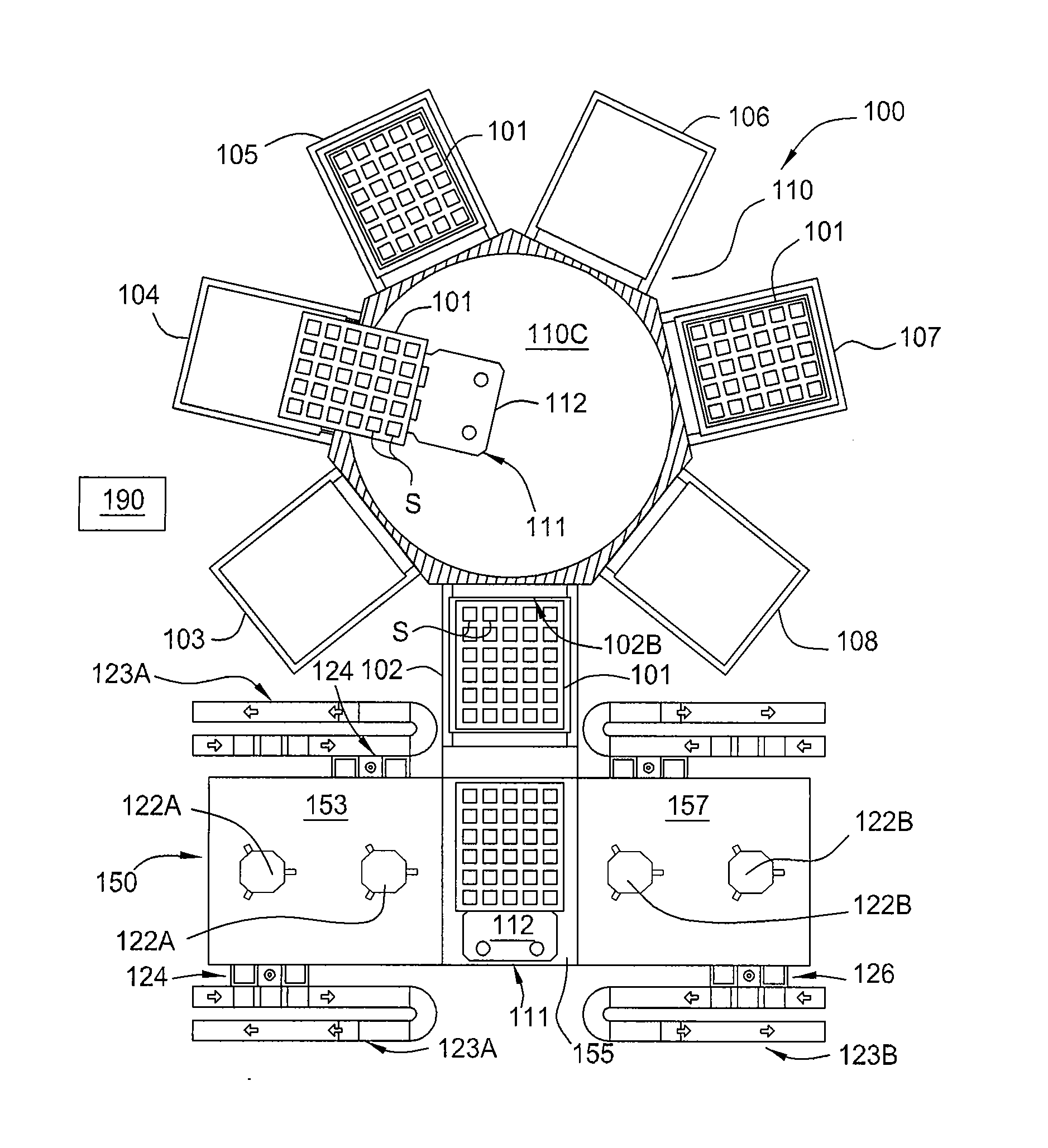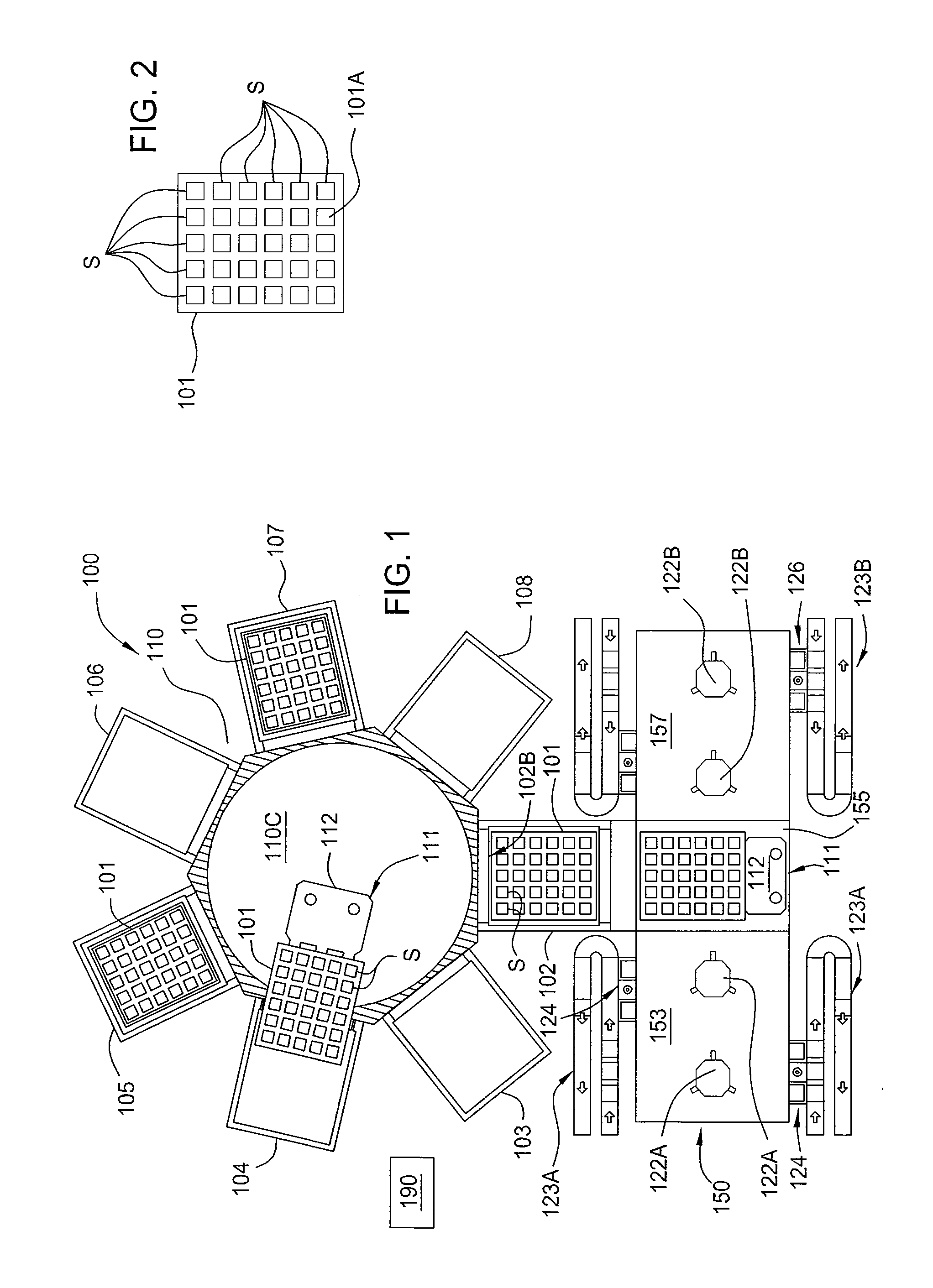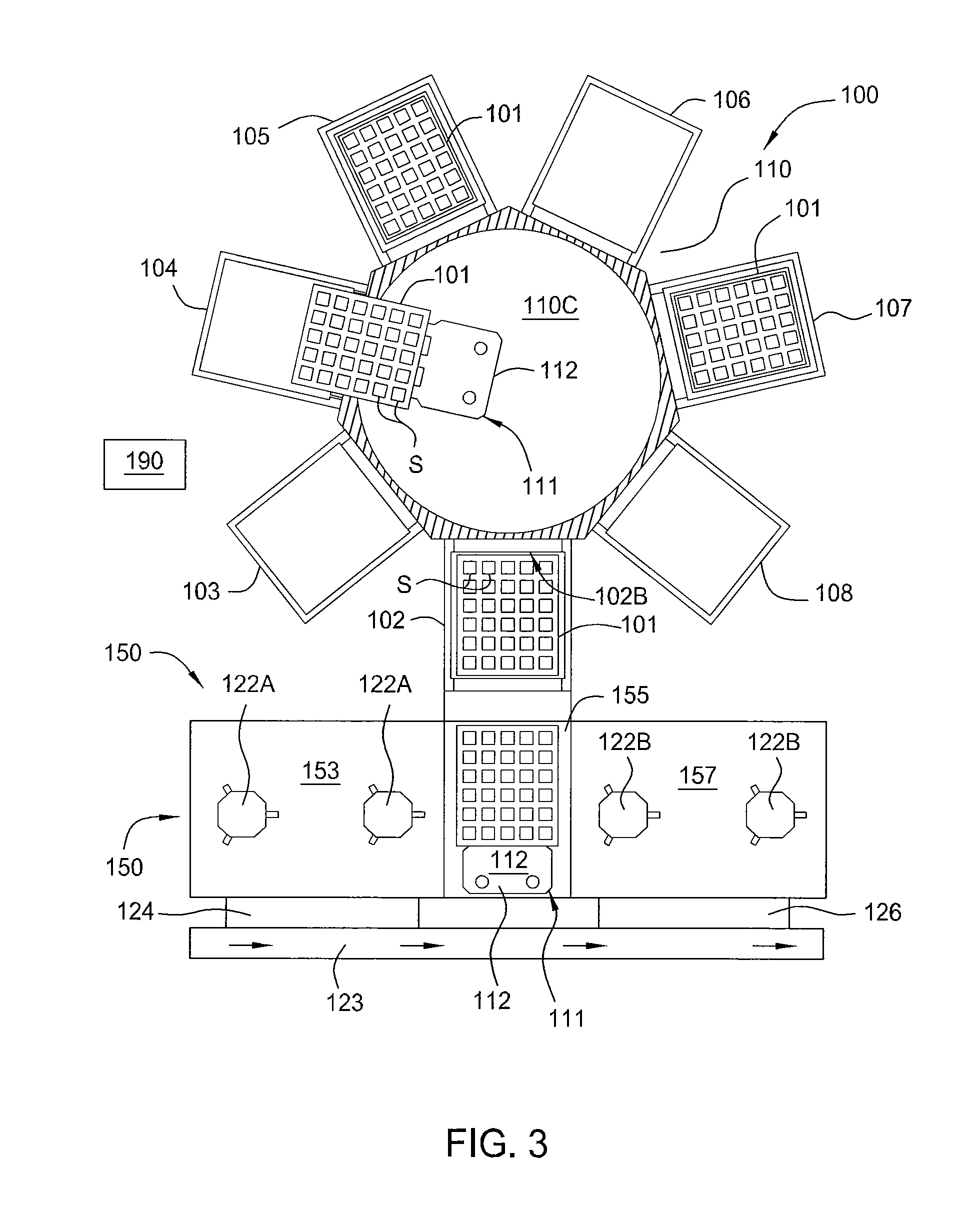Advanced platform for processing crystalline silicon solar cells
a technology of solar cells and crystalline silicon, applied in the direction of cleaning processes and apparatus, instruments, computing, etc., can solve the problems of increasing the cost of producing and supporting all of the processing components in the solar cell production line, and the serious challenges of silicon wafer production development for photovoltaics
- Summary
- Abstract
- Description
- Claims
- Application Information
AI Technical Summary
Benefits of technology
Problems solved by technology
Method used
Image
Examples
Embodiment Construction
[0025]The present invention generally provides a batch substrate processing system, or cluster tool, for in-situ processing of a film stack used to form regions of a solar cell device. In one configuration, a film stack formed on each of the substrates in the batch contains one or more passivating or dielectric layers and one or more metal layers that are deposited and further processed within various processing chambers contained in the processing system. The processing chambers may be, for example, physical vapor deposition (PVD) or sputtering chambers, plasma enhanced chemical vapor deposition (PECVD) chambers, low pressure chemical vapor deposition (LPCVD) chambers, hot wire chemical vapor deposition (HWCVD) chambers, ion implant / doping chambers, plasma nitridation chambers, atomic layer deposition (ALD) chambers, plasma or vapor chemical etching chambers, laser anneal chambers, rapid thermal oxidation (RTO) chambers, rapid thermal nitridation (RTN) chambers, rapid thermal annea...
PUM
 Login to View More
Login to View More Abstract
Description
Claims
Application Information
 Login to View More
Login to View More - Generate Ideas
- Intellectual Property
- Life Sciences
- Materials
- Tech Scout
- Unparalleled Data Quality
- Higher Quality Content
- 60% Fewer Hallucinations
Browse by: Latest US Patents, China's latest patents, Technical Efficacy Thesaurus, Application Domain, Technology Topic, Popular Technical Reports.
© 2025 PatSnap. All rights reserved.Legal|Privacy policy|Modern Slavery Act Transparency Statement|Sitemap|About US| Contact US: help@patsnap.com



